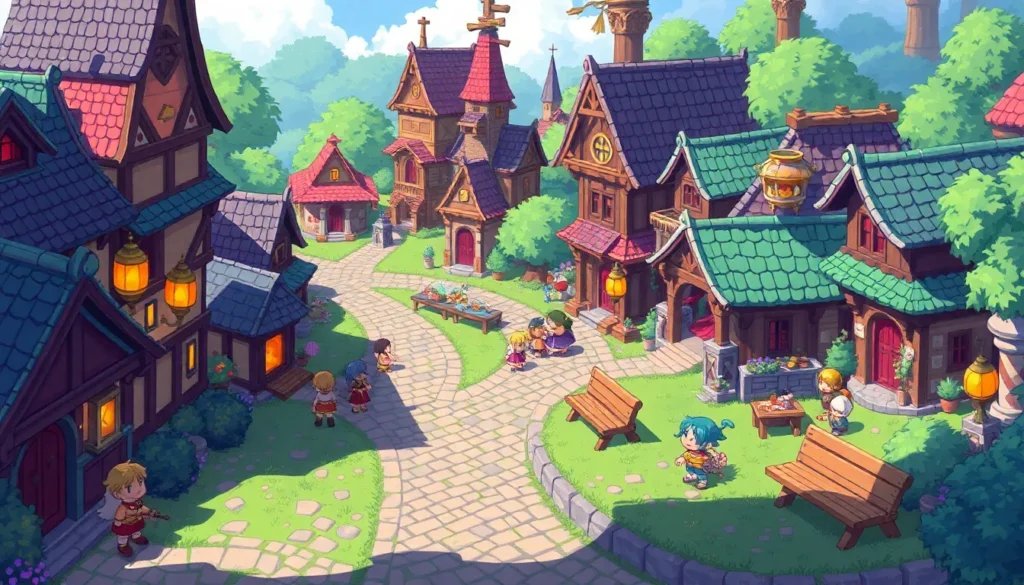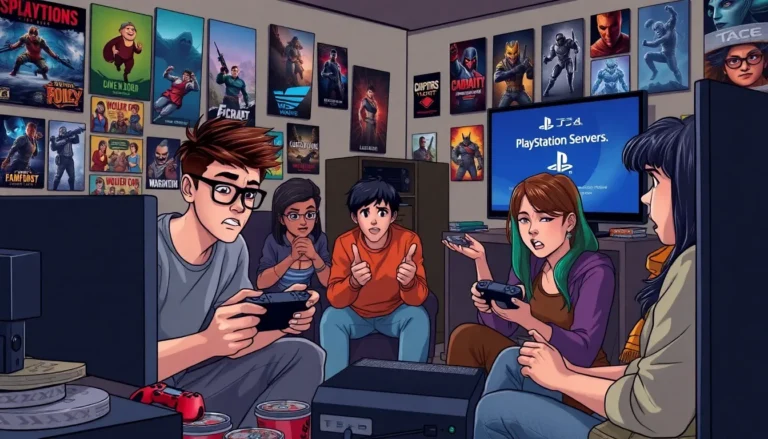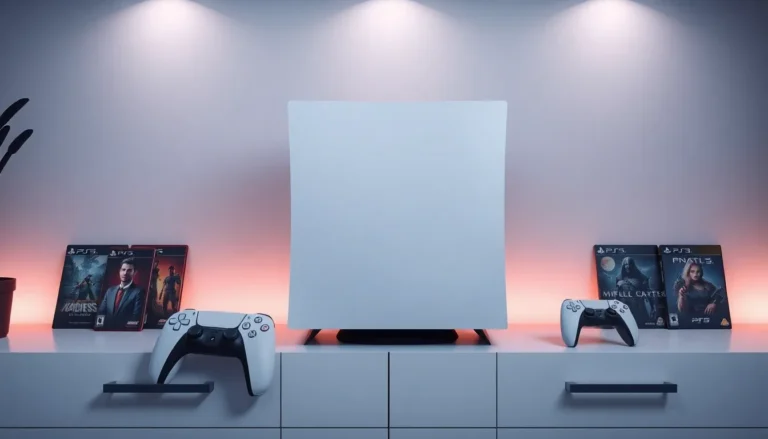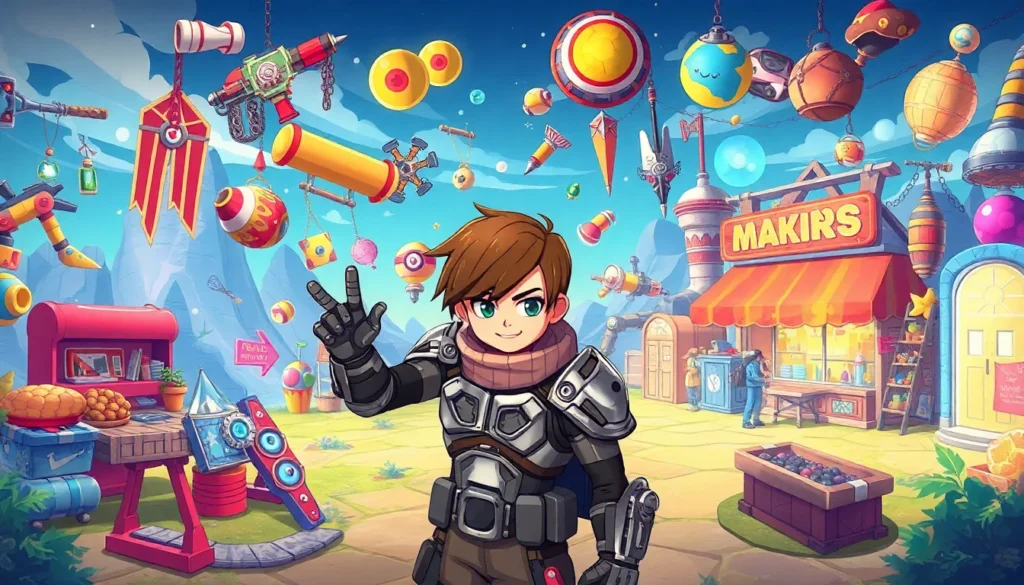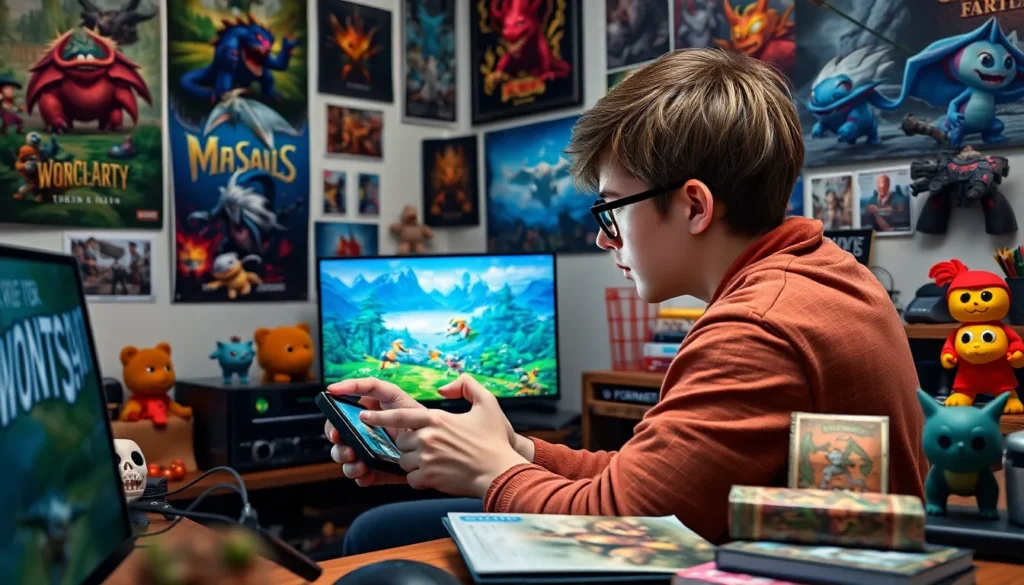When it comes to creating immersive worlds in RPG Maker MV, tilesets are the unsung heroes of game design. These little blocks of pixelated magic hold the power to transform a bland landscape into a vibrant, bustling realm. Imagine crafting a mystical forest where players can lose themselves, or a bustling town filled with quirky NPCs and hidden secrets. It’s all possible with the right tilesets!
Table of Contents
ToggleOverview of RPG Maker MV Tilesets
RPG Maker MV tilesets consist of various pixel art assets. These assets include ground textures, walls, and objects crucial for level design. Creators utilize tilesets to compose diverse environments that engage players visually and narratively.
Tilemaps form the foundation for creating maps, allowing for seamless integration of multiple tiles. Different tiles often correspond to specific terrains, such as grass and water, ensuring appropriate visual representation. Game developers can manipulate these tilesets to produce intricate designs that captivate audiences.
Notably, RPG Maker MV supports both parallax mapping and tile-based mapping methods. Each method features unique characteristics, enabling flexibility in custom map creation. Parallax mapping involves layering images for depth, while tile-based mapping relies on predefined tilesets for a grid system.
Moreover, RPG Maker MV offers an extensive library of default tilesets. This library includes options for fantasy, urban, and indoor settings. Each tileset serves different themes, offering creators a wide array of choices.
Artistic style plays a significant role in gameplay immersion. By selecting appropriate tilesets, developers can evoke specific emotions and atmospheres. A cheerful town tileset may include vibrant colors and whimsical designs, while a dark forest tileset may feature muted tones and eerie textures.
Understanding how to effectively use and customize tilesets enhances a game’s overall aesthetic. Creators can blend various assets, applying unique touches that make their projects stand out. Through thoughtful design and implementation, RPG Maker MV tilesets become transformative tools for storytelling in games.
Types of RPG Maker MV Tilesets
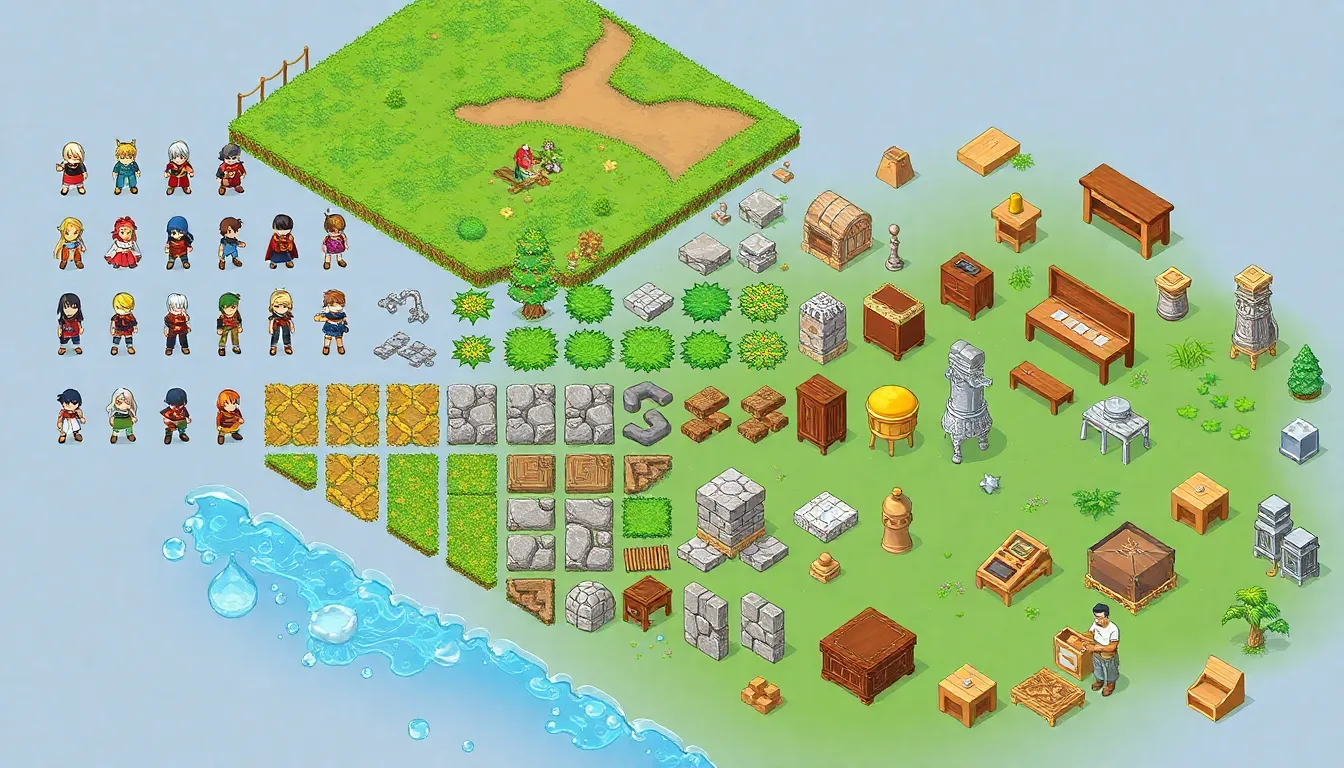
Various types of tilesets exist in RPG Maker MV, each playing a crucial role in building immersive game worlds. Understanding these categories helps creators leverage their full potential.
Character Tilesets
Character tilesets include sprites for player characters and NPCs. These assets showcase different poses, animations, and expressions, allowing for diverse character designs. Standard character sizes fit within 48×48 pixel dimensions, but options for larger or smaller sprites are available. Importantly, character tilesets can represent a wide array of themes, from fantasy heroes to modern-day civilians. By customizing these sprites, creators can convey unique storylines and personality traits, enhancing player connection to the game.
Environment Tilesets
Environment tilesets provide the building blocks for diverse terrains and settings. Ground textures such as grass, dirt, and stone create the foundation of any map. Additionally, wall tiles and structure designs contribute to immersive experiences. Options for urban, rural, and fantastical locales offer flexibility in world design, accommodating various themes and styles. Environment tilesets also introduce interactive elements, such as doors and traps, enriching gameplay. By skillfully combining these assets, designers create visually and narratively engaging landscapes.
Items and Objects Tilesets
Items and objects tilesets contain essential assets that populate game worlds. These include furniture, decorations, and interactive items like chests or tools. Designers use these elements to create dynamic environments that encourage exploration. Each object tile serves a specific function, from quest items to aesthetic details that enhance visuals. Additionally, item tilesets fit seamlessly into environment layers, ensuring cohesive design. By integrating varied objects and items, creators can craft a wealth of interactions, enhancing player engagement and storytelling depth.
Creating Custom RPG Maker MV Tilesets
Creating custom RPG Maker MV tilesets involves selecting the right tools and applying effective techniques to design engaging environments. Custom tilesets allow creators to express unique artistic styles and enhance gameplay experiences.
Tools for Designing Tilesets
Designers often use software like Aseprite and Tiled for creating tilesets. Aseprite provides pixel art creation tools, making it easy to edit individual tiles. Tiled helps in assembling tiles into coherent maps, allowing for seamless integration. GIMP and Photoshop also serve as versatile options for tile creation, offering advanced editing features. Utilizing these tools enables creators to produce high-quality pixel art assets for RPG Maker MV.
Tips for Effective Tileset Creation
Prioritizing grid alignment streamlines the process, ensuring tiles fit perfectly with others. Incorporating a cohesive color palette across tiles enhances visual harmony. Experimenting with various tile sizes allows for diverse designs, accommodating different gameplay styles. Testing tiles constantly in the game engine helps identify potential issues early. Keeping details simple maintains clarity, preventing visual clutter in maps. By following these tips, designers can create tilesets that enrich player engagement and storytelling.
Using RPG Maker MV Tilesets in Your Game
RPG Maker MV tilesets play a vital role in shaping engaging game environments. These pixel art assets enable designers to bring their creative visions to life effectively.
Importing Tilesets into RPG Maker MV
To incorporate tilesets into RPG Maker MV, users begin by selecting the desired tileset files. Compatible formats include PNG, which suits the engine’s requirements. After locating the tilesets, they can easily import them through the tile database in the software. Accessing the database allows for simple organization and categorization of tiles. The next step involves assigning the imported tileset to specific maps, ensuring alignment with the intended design. Checking for proper transitions between tiles also contributes to visual cohesion within the game.
Implementing Tilesets in Game Design
Successful game design heavily relies on clever tileset implementation. Designers often start by outlining the desired environment, whether it be a bustling town or serene forest. Next, they strategically use tiles to enhance storytelling elements and gameplay mechanics. For example, employing unique ground textures creates varied terrains, while interactive objects may encourage exploration. Balancing aesthetics alongside functionality is crucial for maintaining player engagement. Testing the tilesets within the context of the game solidifies their effectiveness, providing valuable insights into how players experience the visual landscape.
RPG Maker MV tilesets are essential for any game designer looking to create captivating worlds. By leveraging the variety of available tilesets and customizing them, developers can craft environments that resonate with players. The right combination of character, environment, and object tilesets not only enhances the visual appeal but also enriches storytelling and gameplay.
Utilizing tools like Aseprite and Tiled simplifies the creation process, allowing for creativity to flourish. As designers explore the possibilities within RPG Maker MV, they’ll discover that effective tileset implementation transforms their games into immersive experiences. With thoughtful design choices and attention to detail, the potential for creating unforgettable game worlds is limitless.

